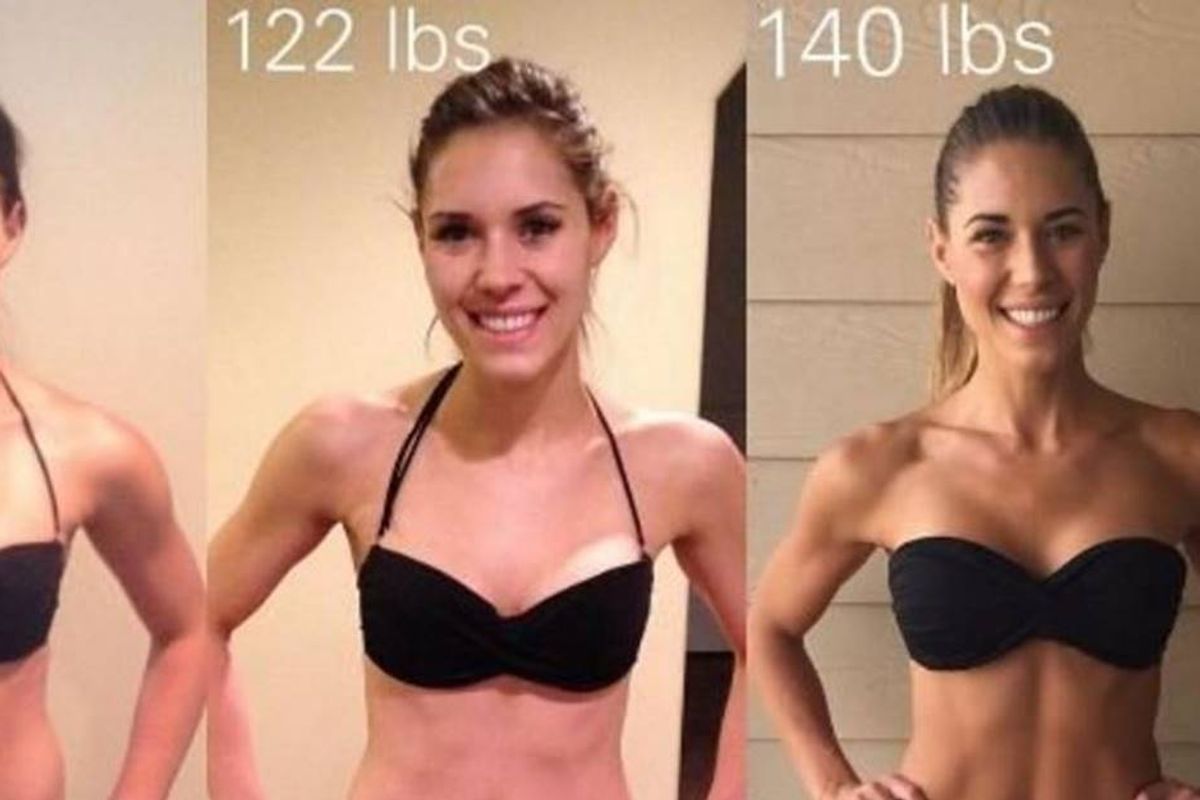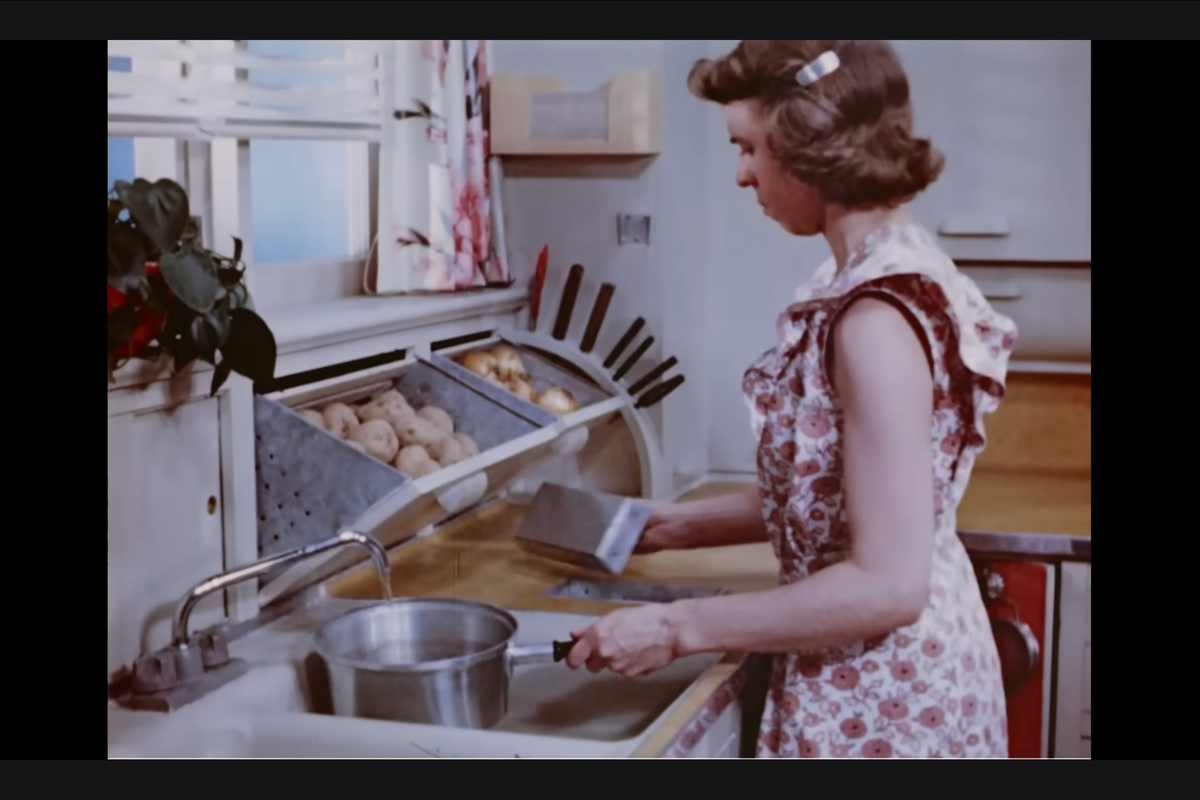Kelsey Wells’ side-by-side photos prove that weight doesn’t equal health
"Screw the scale."

Kelsey Wells at three different weights.
It's super easy for most people to get hung up on the number on their scales and not how they actually look or, most importantly, feel. People often go on diets in hopes of reaching an ideal weight they had when they graduated high school or got married, but they're often disappointed when they can't attain it.
But a set of photos by fitness blogger Kelsey Wells is a great reminder for everyone to put their scales back in storage.
Welles is best known as the voice and body behind My Sweat Life, a blog she started after gaining weight during pregnancy. To lose the weight, she started the Bikini Body Guide (BBG) training program and after 84 weeks she shared three photos on her Instagram account that prove the scale doesn't matter.
The photos showed her at her start weight (144 pounds), the weight she hit two months after giving birth (122 pounds), and current weight (140 pounds). Now she weighs exactly what she did when she started the program but her body is entirely different.
Here's an excerpt from Wells' Instagram post:
SCREW THE SCALE || I figured it was time for a friendly, yet firm reminder. YOU GUYS. PLEASEEEEEE STOP GETTING HUNG UP ON THE NUMBER ON THE STUPID SCALE! PLEASE STOP THINKING YOUR WEIGHT EQUALS YOUR PROGRESS AND FOR THE LOVE OF EVERYTHING PLEASE STOP LETTING YOR WEIGHT HAVE ANY AFFECT WHATSOEVER ON YOUR SELF ESTEEM, like I used to.
To any of you who are where I once was, please listen to me. I am 5' 7" and weigh 140 lbs. When I first started #bbg I was 8 weeks post partum and 145 lbs. I weighed 130 before getting pregnant, so based on nothing besides my own warped perception, I decided my "goal weight" should be 122 and to fit into my skinniest jeans. Well after a few months of BBG and breastfeeding, I HIT IT and I fit into those size 0 jeans. Well guess what? I HAVE GAINED 18 POUNDS SINCE THEN. EIGHT FREAKING TEEN. Also, I have gone up two pant sizes and as a matter of fact I ripped those skinny jeans wide open just the other week trying to pull them up over my knees.?? My point?? According to my old self and flawed standards, I would be failing miserably.
This article originally appeared on 10.26.17
- Viola Davis on the moment she realized she didn't have to lose ... ›
- Celine Dion shut down haters criticizing her weight loss in the most ... ›
- Melissa Harris-Perry has a great point about Oprah's new weight ... ›
- Researchers say 'roundness' should replace BMI. Here's why. - Upworthy ›
- Celine Dion shares stiff person syndrome diagnosis with fans - Upworthy ›



 TikTok · Ale
TikTok · Ale
 Kittens are the cutest.
Kittens are the cutest.  Grrrr, wook at his widdle paws and his widdle whiskers.
Grrrr, wook at his widdle paws and his widdle whiskers. 

 Design 3D GIF
Design 3D GIF 
 Bluebells at the Brooklyn Botanical Gardens.
Bluebells at the Brooklyn Botanical Gardens. 